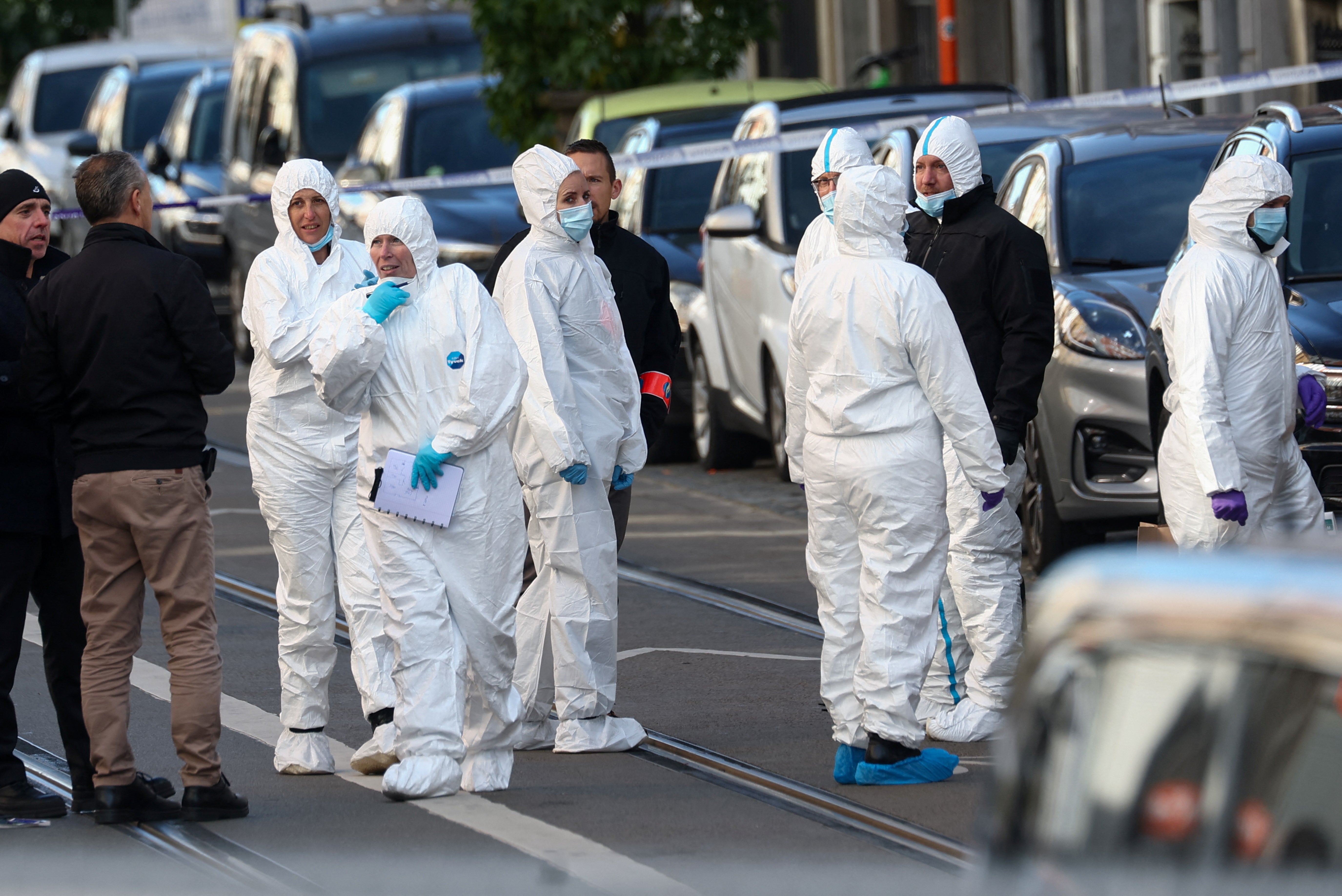First Israel, now Belgium – will we face a contagion of violence?
As three Swedish football fans are shot in Brussels, fears abound of a wave of Islamist-inspired pro-Hamas terrorism engulfing Europe, writes historian Mark Almond. But will it turn out that the killer was a so-called ‘lone wolf’?


With all eyes on the agony of Gaza and the grief of Israel over its victims, a man shoots two Swedes dead and wounds a third in central Brussels. On the run only for a few hours, the Tunisian suspect managed to set alarm bells ringing far beyond Belgium.
It has emerged that the Brussels’ shooter’s internet manifesto claimed that he was going on the rampage to revenge a widely-reported Islamophobic murder in the USA, after a mother and her six year old were stabbed by their landlord who shouted anti-Arab sentiments, apparently in reaction to the massacre by Hamas.
People may fear a wave of Islamist-inspired pro-Hamas terrorism engulfing Europe’s urban centres, as happened in France and Belgium eight years ago. But will we face a contagion of violence – or is this more likely to be a so-called “lone wolf” attacker?
Solo terrorists have wrought havoc before, without being organised from some sinister terrorist centre. The modern world’s interconnectedness informs susceptible people about how to copy acts of extreme radicalisation.
The death of Palestinian-American boy Wadea Al-Fayoume, who was stabbed 26 times at his home near Chicago – and his 32-year-old mother more than 12 times – is, from what we know so far, one such tragedy.
The sudden switch to extreme violence is what makes such terrible crimes so difficult to predict. Time and again, friends and neighbours say that the perpetrator seemed a normal person, a bit quiet, lived alone but gave no sign of radicalisation or aggression.
When the online activities of a sudden killer are traced, it often turns out they inhabited a violent cyber-world. Sometimes their quiet involvement with a few other alienated radicals has been noted by the police.
After an attack, people demand: why didn’t the police forestall it?
The biggest problem is identifying people likely to go over the edge from those just scouring “terror porn” on the web, or loud-mouthing aggressive sentiments against Western decadence or sympathy for Israel. It takes six or eight agents to keep one person under surveillance.
In a big country, there may be many hundreds of likely suspects but only a dozen who would really kill if they could. How to spot the probable terrorist is not easy – and there is no science or AI to predict infallibly who will turn deadly.
Even when an attacker claims affiliation to Isis, far from necessarily being the tool of an evil web spun by a global terrorist mastermind, it is the worldwide web which can provide the stimulation and justification to these lone wolf attacks. They are copycats of widely-reported atrocities in most cases, rather than plotted from some Isis safe haven.
Lone wolves live inside an internet world densely-populated with heroes (villains to most of us) to copy, and victims to target.
Like the infamous eco-Unabomber, the Islamophobic Norwegian mass murderer Anders Breivik was an unlikely terrorist. He spent a long time drafting a 1,500 page manifesto which might have suggested he was the classic incel-type of solipsistic fantasist – that was, until he murdered 77 people. His rampage inspired at least one equally murderous lone copycat in far away Christchurch in New Zealand to go on the rampage at local mosques.
It is tempting to see censorship as a tool to block any reference to these sinister role models who might trigger the psychologically susceptible. That was New Zealand prime minister Jacinda Ardern’s response, promising never to let the name of the Christchurch killer be heard again. Censorship, however, fits the conspiracy mindset – which often underpins terrorists’ justification for violence.
Terrorists have a lot in common with each other, despite their clashing rhetoric. Their psychological motivations are a better way of explaining why a few people adopt extreme causes and an even smaller number act on their identification with a cause. In championing the “victim”, they find the justification for letting loose their aggression.
The lonely, resentful individual identifies with a group embodying alienated victimhood. From random US school shooters to Islamist gunmen in Europe, personality traits are at least as important in identifying mass killers as ideology or religion.
Vastly more people access conspiracy websites or bemoan the “infidel” West than turn violent or even do anything beyond clicking on a webpage – just as the vast majority of failed asylum-seekers are not closet terrorists. Most of the people with nasty ideas are unlikely to put them into practice. But a few do.
It is no comfort to be a victim on the receiving end of their violence and to be told that your case is very rare.






Join our commenting forum
Join thought-provoking conversations, follow other Independent readers and see their replies
Comments